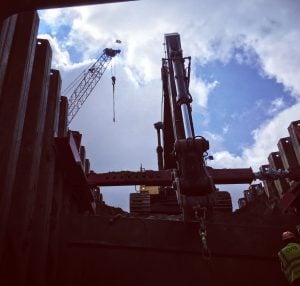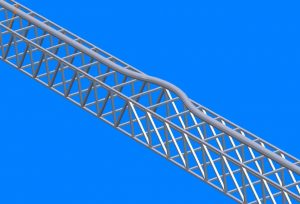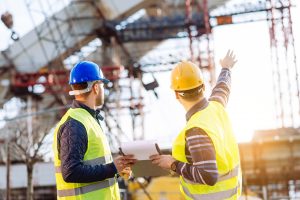No assembly required? That’s right. Unload that aerial lift off the truck, hop on and away you go. And go you will – just in ways you may not anticipate. And that is the problem. Too many users of aerial lifts think they are a no brainer to use. They assume there isn’t anything to it. Push a button, pull a stick; how complicated can that be? Well, that’s not the complicated part. To quote the American National Standards, ANSI, for Boom Supported Elevating Work Platforms,
“The operation of any aerial platform is subject to certain hazards that can be protected against only by the exercise of intelligence, care, and common sense and not by mechanical means. It is essential to have competent, careful personnel trained in the intended use, safe operation, maintenance and service of this type of equipment.”
The bottom line is that, as with many types of equipment, it is training and skill that will minimize hazards, not additional equipment. The Federal Occupational Safety and Health Administration, OSHA, has a specific section within the scaffold standards to address aerial lifts. It is 29CFR1926.453. Unfortunately, this section of Subpart L is somewhat inadequate for today’s aerial lifts. Due to circumstances that occurred in the development of Subpart L, it was necessary to reference an old (1969) ANSI aerial lift standard, A92.2-1969, for use as part of the OSHA standard. This standard, written prior to the proliferation of today’s various types of aerial lifts, does not clarify the type of fall protection required for the different types of aerial lifts. The result of this is confusion pertaining to the safe use and operation of aerial lifts. More importantly, it confused the fall protection requirements for aerial lift users. A careful reading of 29CFR1926.453(b)(2)(v) indicates that “a body belt shall be worn and a lanyard attached to the boom or basket when working from an aerial lift.” No distinction is given between a “boom lift” and a “scissors lift.”
Fortunately, OSHA recognized the confusion that existed due to the reference to the 1969 ANSI Standard. OSHA remedied the situation by including the current editions of applicable aerial lift ANSI standards in the non-mandatory appendices of the OSHA scaffold standards. This means that the trained user who complies with the applicable ANSI Standards will be in compliance with the OSHA Standards. Additionally, if the user complies with the manufacturer’s requirements, he/she will also be in compliance with the safety standards.
A review of the ANSI Standards for Boom-Supported Elevating Work Platforms (boom lifts) andSelf-Propelled Elevating Work Platforms (scissors lifts) reveals specific fall protection requirements. First, both boom-lifts and scissors lifts must have guardrail systems. Second, all occupants of boom-lifts must use fall restraint equipment to keep them in the basket or fall arrest equipment to catch them if they leave the basket. Third, all occupants must comply with the manufacturer’s requirements for fall restraint/arrest. (Fall restraint is keeping you from falling out of or being ejected from the basket. Fall arrest is catching you after you have fallen out of the basket. Obviously, fall restraint is highly desirable to fall arrest!)
This distinction between restraint and arrest leads us to the issue of body belts. OSHA outlawed, and for good reason, the use of body belts for fall arrest but has still allowed them for fallrestraint. Therefore, the reference to a body belt in the standards is correct, provided you are only using the belt for restraint only. Many employers do not make the distinction between belts and harnesses and therefore only allow employees to use full body harnesses. This is an excellent practice since it eliminates any potential mistakes. Furthermore, for restraint to work, only a short lanyard, attached to the manufacturer supplied anchor, must be used. A worker using a six feet long lanyard can still get launched out of the basket. This would not be good.
Scissors lifts, when used correctly, do not have the potential to launch people off the platform. Therefore, a guardrail system is normally considered adequate. However, even in this situation, if the manufacturer of the equipment provides an anchor and specifies in their instructions that occupants must use personal fall protection, then compliance is expected. In other words, not complying with the manufacturer’s recommendations can be construed as being in violation of the OSHA Standards.
If you are a user of aerial lifts, you must comply with all of the manufacturer’s instructions and recommendations. You also must comply with the applicable ANSI Standards. If you use aerial lifts, you should have these standards. In fact, there is no excuse not to have the standards because it is easy to obtain them from the Scaffold Industry Association at a very reasonable cost. As they say, don’t delay, order today; the life you save may be your own!














